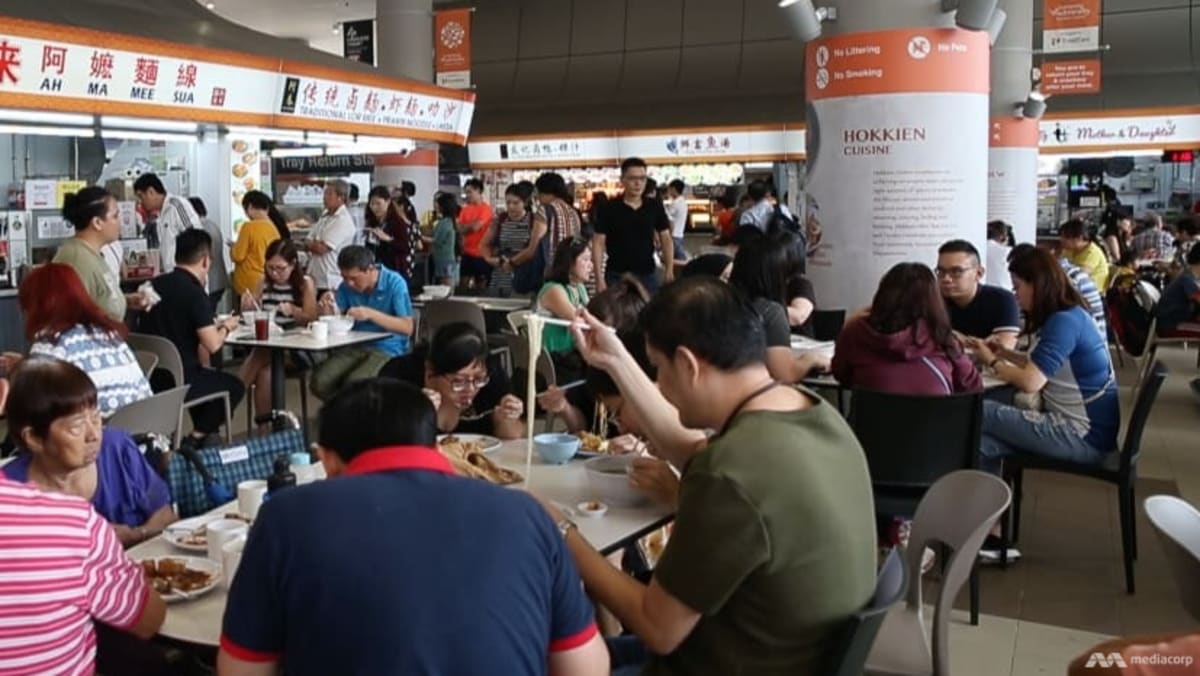VOLUNTARY CHARITY
Mr Eng said he would be open to supporting voluntary charity projects, such as occasionally providing free meals to a nearby nursing home. Other hawkers echoed similar sentiments, saying they give discounts, extra food and even entire meals away free when needed.
Mr Nicholas Ho, who runs Ming Chung White Lor Mee stall at Buangkok Hawker Centre, said he tells customers who do not have enough money to return and pay later.
This happens more frequently at his restaurant along Mort Road, which is located near some rental flats, the 31-year-old said. Many of these are regular customers and he understands their financial situation, Mr Ho added.
“Some customers, if they see other customers who cannot pay, sometimes they will also help to pay for them,” he said.
He pays about S$4,000 a month in rent and cleaning fees, and his budget meal option at Buangkok Hawker Centre is beehoon soup with vegetables and egg, priced at S$3.20. The meal is less popular with customers since his stall is known for lor mee, but other stalls in the hawker centre have seen high demand for their budget meals.
“I heard at some stalls they were selling a lot of the budget meals, so they couldn’t handle it, and they limited it to 10 per day. If they have to sell 50 plates, it would be difficult,” he said, adding that he only gets about two to three orders a week for his budget meal.
Some hawkers scale down portions for budget meals. At Ci Yuan Hawker Centre, a fish soup stall offered vegetable soup for S$3, while a Japanese stall serves a bowl of rice with egg, onions, sauce and green sprouts for S$3. “NO MEAT”, a sign specified.
A nasi lemak hawker at One Punggol described his S$3.50 budget meal as a “kid’s meal” and said he does not make a loss on it. He rarely encounters customers asking for free food at Punggol, where residents are generally younger and more affluent.
Elderly or lower-income customers are more common at his Whampoa stall, which is located in a hawker centre run by the National Environment Agency.
“We will just treat them to the food. If we see that they really need the food, we won’t take their money,” he said.
MANAGING COSTS, WHILE HELPING THE VULNERABLE
A hawker who only wanted to be known as Mr Ng, and who runs a fish soup stall at Bukit Panjang Hawker Centre, said stalls there were allowed to raise their budget meal prices when contracts were renewed last year.
He pays about S$4,900 a month in rent and cleaning fees, but has kept his dory fish soup beehoon at S$2.90. His other dishes range from S$5 to S$7 – fish is expensive, one of his assistants noted.
“If I raise prices, there are elderly customers or kids who won’t be able to afford it anymore. What’s the point of raising it if the budget meals are supposed to help them?”
Mr Jarek Tan, who manages operations for a thunder tea rice chain at Fernvale Hawker Centre, said their S$3.20 budget meal remains profitable, with one to two orders daily.
The business also gives out between 500 and 1,000 free meals each year. When their Woodleigh stall first opened, he recalled that workers at the hawker centre said they had no money and asked for leftovers.
“Our staff called us to ask what they should do. We said it was okay and to just give it to them for free,” he added. “(We should do it) out of kindness, to show more humanity.”
The 25-year-old said he would not take money from customers who say they cannot pay. At Fernvale, a regular wheelchair-bound customer pays S$4 instead of the usual S$5.90 for a bowl of thunder tea rice.
When asked about making free meals compulsory, Mr Tan said most hawkers would not support such a move.
“The cost of living now … everyone is struggling. If they want to do it, people will give willingly. But if you want to enforce it, nobody is going to agree.”

